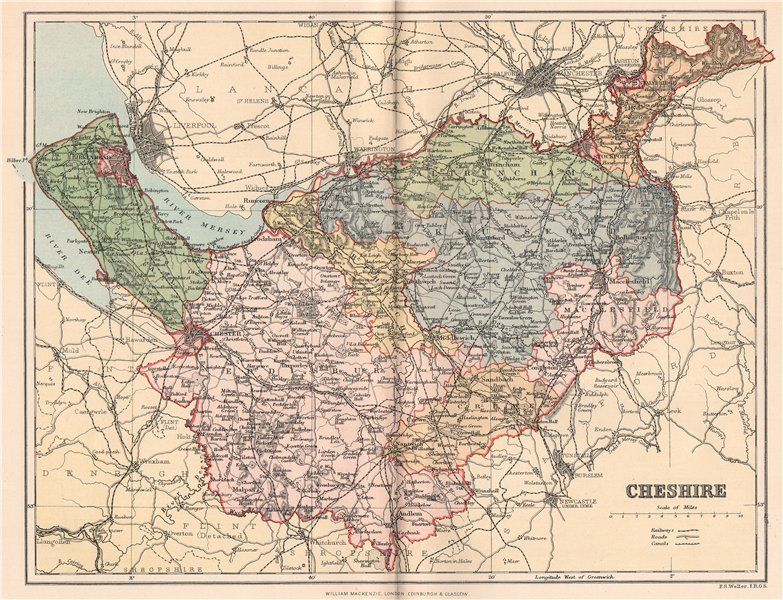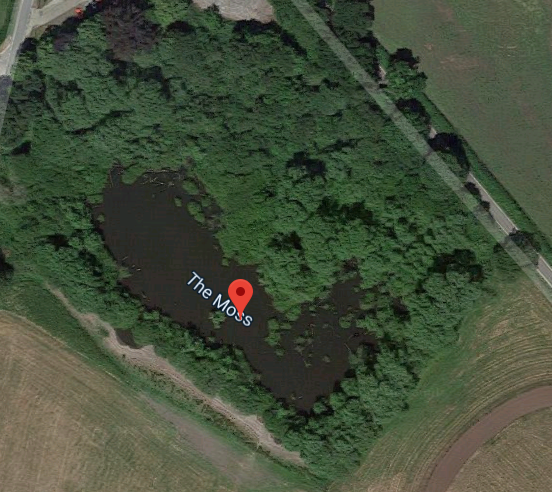Martha Martin (b.1871): Home & Family [2/2]
John Burnett writes that the growth of consciousness which occurs in childhood was ‘described in terms of the physical expansion of the child’s universe’ (1994, 8). The expansion of Martha’s ‘universe’ is apparent through the fact that Martha and her family moved frequently throughout her childhood, due to the fact that (her) ‘father did not seem to settle anywhere very long’ (p.6).
The first house that Martha remembers is ‘the Hough’, which she describes as ‘a big timbered down old place’ that they only ‘seemed to occupy part of’ (p.7).

“The Comprehensive Gazetteer of England and Wales”; Edited by J.H.F. Brabner, Published by William Mackenzie, London
Soon after, the family moved to ‘the Moss’, ‘a big house compared to what we had lived in’ (p.11). Martha notes that there was a wood nearby to their second home, though the children were not allowed there as it was ‘swampy…almost like quicksand’ (p.12).

Reflecting on her childhood homes makes Martha particularly nostalgic as she writes ‘…I would just love to go that way again, and see the places as I remember in childhood’ (p.13). Kirsi-Maria Hytönen suggests that ‘nostalgia is longing for the past, the safe and familiar world where things are better’ (2013, 96). Martha’s world is safe and familiar as ‘all the places I have mentioned were within about 5 or 6 miles from Crewe’ and her houses were ‘2 or 3 miles apart’ (p.13).
She next lives in Stockton for two years, is ‘poor there’ (p.25), and remarks how, on one occasion, her and her siblings passed food through to the adjoining house ‘small things like a potato could be passed through so that when we used to be making this stuff what one had not got the other had, so we used to pass to and fro’ (p.24).
The next place the family go to is Bishops Wood and, due to a mishap with a delivery van when they arrived, they all had to sleep on the floor, which she remarks ‘must have been a sight to behold’ (p.32). Despite the initial problems, Martha suggests that they are ‘more settled’ in this house (p.41).
When Martha is 15 things begin to change, as ‘tired of being Home’, she begins working. At this point, she writes that she was the first of her siblings to leave home. Martha’s childhood was full of moving from place to place, something which leads her to write ‘my paths have been more forward than backward’ (p.26).
In my next post, I will talk about Martha’s education and schooling. I’ve learned a lot about Martha as I’ve been reading through her memoir and I hope you have learned something from these blog posts.
Bibliography:
Burnett, John.
‘Idle Hands: The Experience of Unemployment, 1790-1990’ Routledge, London, 1994
Hytönen, Kirsi-Maria. “Hardworking Women: Nostalgia and Women’s Memories of Paid Work in Finland in the 1940s.” Oral History, vol. 41, no. 2, 2013, pp. 87–99. JSTOR, www.jstor.org/stable/23610427.
Martin, Martha.
‘The Ups and Downs of Life’, Burnett Archive of Working Class Autobiographies, University of Brunel Library, Special Collection Library 1:499
Previous Posts:
Introduction:
/martha-martin/martha-martin-b-1871-an-introduction
Home & Family [1/2]:
/home/martha-martin-b-1871-home-family-1-2

Leave a Reply